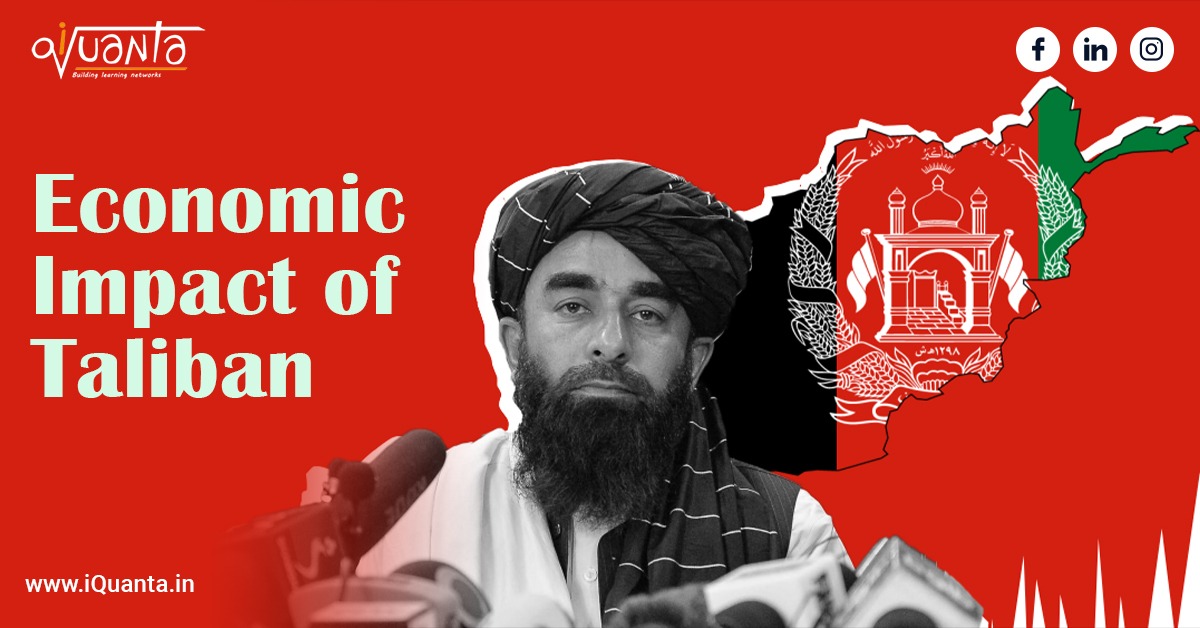In the last few days, Taliban’s return to power has created many new problems for a country like Afghanistan which was already an economically impoverished country.
For the past twenty years, US troops had prevented the Taliban from occupying Afghanistan and the economy was mainly propped up by US aid. But within a few days of US troops leaving the country, Taliban took control of all the states of Afghanistan.
During the time of the presence of US troops, Afghanistan had made some progress. Life expectancy increased from 56 years to 65 years, Internet usage went up by more than 11.5% and primary school enrollment increased from 21% to 104%.
The 104% number is due to the fact that a good number of overage children were enrolled in each grade because of repetition or late entry. People were finally getting access to good education.
Now that the Taliban has taken over, the future looks cloudy. Afghanistan still remains one of the poorest countries in the world. 90% of the country’s population lives on less than $2 a day, and its GDP in 2020 was just under $20 billion.
The country holds vast potential but it depends on what kind of measures will be taken now. Afghanistan has around 60 million metric tons of copper, 2.2 billion tons of iron ore, 1.4 million tons of rare earth elements (REEs) such as lanthanum, cerium, neodymium, and veins of aluminium, gold, silver, zinc, mercury, and lithium.
All these resources are valuable which is estimated to be somewhere around $1–3 trillion as these are some rare earth metals.
Lithium is a key component in building lithium-ion batteries which are used to power phones, electric scooters or any other electronic equipment. Afghanistan has so much Lithium that it has the potential to become the world leader.
This potential can only become a reality if the administrators in this case are willing to invest in the country’s future. They’d have to do something about monetizing these assets.
Taliban enjoys a cozy relationship with China which would benefit them if leveraged properly. However, the question is if the money made by monetizing these assets will be shared with the people of Afghanistan.
Talking about the human capital, Afghanistan is a young nation, with two-thirds of the population under the age of 25. Due to the presence of US, the literacy rates had improved a lot with many women entering the business world. But with the Taliban in control now, everything looks blurry.
Coming to the economic impact of the Taliban on India.
The total value of exports and imports of India with Afghanistan comes to about $1.5 Billion. India exports tea, cotton, and pepper and imports dried fruits and nuts from Afghanistan.
Due to the control of the Taliban, the trade hasn’t exactly been thriving. In fact there can be a small rise in the prices of raisins and almonds in the near future due to lesser supply.
The important thing to look at is the long-term implications of the Taliban takeover. Whether India will engage with the Taliban directly and keep supply chains open or India will resort to backchannels and still continue to trade with the country is something to be seen in the near future.
Considering the speed at which the geo-political realities of the Afghan state have fundamentally changed over the past few months, anything is possible.
So, Taliban takeover is not exactly good when looking at the economic impact.
To structure your CAT online preparation in an efficient way consider joining iQuanta which is a top online cat coaching institute and being a part of the iQuanta CAT 22 Course.
You can also check out and be a part of their Facebook group for peer learning, doubt solving and free material.
For 24*7 doubts-solving, FREE guidance and counselling and peer to peer learning, join the CAT preparation Fb group below:




